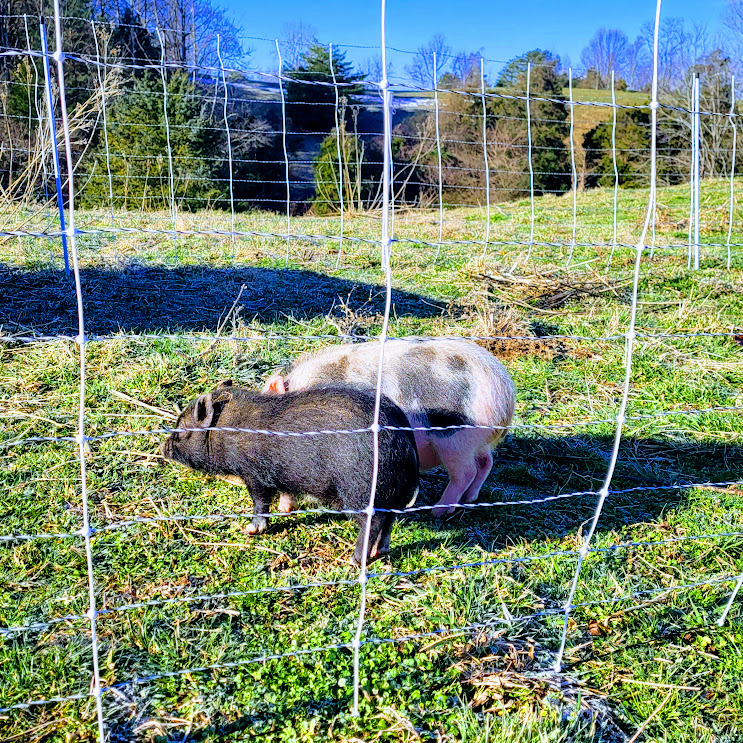Using Pigs to Till and an Awesome DIY Pig Waterer
This post may contain affiliate links which won’t change your price but will share some commission.
Thank you for supporting us!
Back in December, we got two little pigs with a very important job: till and fertilize the garden. If want to skip to the awesome DIY Pig Waterer, click here.
Their Temporary Home:
Getting these pigs was a spontaneous decision for us. The first rule of getting new livestock: always have a proper shelter and pen prepared for them BEFORE getting them. Well, we broke this rule. After bringing these pigs home, we quickly put together an old doghouse attached to a large dog crate covered in hardware cloth, making it predator proof (this was already assembled as we had anticipated using it as a grow out space for rabbits…but we are still working on successfully breeding them). Then, we made a run for them out of two portable dog fences, secured to t-posts.

What we were least prepared for when we got pigs was watering them. As soon as they were settled in to their new home, we put out a basic water bowl. They promptly spilled it and we had to quickly improvise. Having read that pigs can drink water from nipples, we decided to give our rabbit waterers a try as we had a couple extra. This worked splendidly for our small pigs! Knowing that these waterers would soon be out grown, we got to work on ordering parts and creating a larger watering system to be used in their next pen.
This setup was in our old garden. We wanted the pigs to work on clearing out the grass and weeds that were in between the rows. After a few weeks, they had the area reduced to mud and were ready to move on to greener pastures.
The Pigs’ New Home to Till:



While we appreciate the pigs’ work in the getting all the weeds out of our current garden, their real purpose is to break ground in what has been a cow pasture for decades. We will be expanding our garden in this area.
During the few weeks they spent in their temporary living space, we built them a larger shelter made out of pallets. We also purchased electric netting and a solar energizer from Premier 1. The electric netting is much taller than needed for pigs (it’s 48 inches tall). We purchased this size for two reasons: first, with its height, it’s rated to keep out predators; and second, by getting a taller fence we will be able to use it with goats in the future.
Our Awesome DIY Pig Waterer


The last component for their new home was this waterer. We purchased these pig nipples because the set comes with plumber’s tape to help seal the hole. However, we found that the tape was not enough to make it water tight and James had to also caulk around the holes. Once we had the waterer water-tight, this watering system was an easy transition for our pigs. They were able to switch from drinking out of rabbit waterers to a 5-gallon bucket. Now, we no longer have to fill their water daily. Ideally, we will make a gutter system from their shelter that would drain into their bucket. While their roof may not generate enough rainwater to completely water them, it would at least reduce the frequency that we need to fill their waterer. If you would like to make your own pig waterer, you can find the nipples we purchased on Amazon here and the gaskets we later realized we needed to prevent leaking here.

The Pigs Have Finished Their First Job
After moving the pigs into their new pen, we put the first garden bed to rest. Cleaning out their shelter provided some additional mulch and cover for the soil until we plant it in a few months. Even the dog house and kennel have been moved. In the event we are ever able to successfully breed our rabbits, its ready to be a grow out cage again!

